
Miramichi Salmon Report Early August 2023
Fishing Friends:
The jury is still very much out on what has been so far a very strange season on the Miramichi. Water levels have been persistently high all season with only the last week or so getting under 1 meter on the Blackville gauge, and then just barely. You can refer to my early season Miramichi Salmon Blog on my Brad Burns Fishing website for more info on the June and early July fishing.
During summers with high water fish can be assumed to go further up all the rivers than normal, and this has left the traditional lower-river cold water pools shorter on fish than they would otherwise be. Conditions in July were warm too, and after two closures for Warm Water Protocol since July 15 – where the river doesn’t drop below 68F for 48 hrs – the river reopened for the second time on August 2. Catches are decent with a good showing of fish present at the better-known cold-water pools. The two-week forecast contains no really warm weather and only sporadic rain. I’d like to be in my truck heading back to the Miramichi, but since I’ve been gone far more than I’ve been home since Memorial Day I’m going to try and contain myself until September.
The morning the fishing reopened Eddie Colford of the Black Brook Salmon Club reported catching a salmon and rolling several others. One of his guests landed a nice salmon the next morning. Darrell Warren said his guests from a Campbell’s Pools MSA donation landed salmon and rose other fish up in the Cains on dry flies, and Country Haven’s young angler from Germany landed a nice salmon a little further up the Cains.
It isn’t just pooled up fish either as Eddie reported seeing a run of grilse move through, and Byron Coughlan of Country Haven noted Vs on the water’s surface from salmon schools passing up the river by his lodge. I hope and expect that even though it is August which is generally the low ebb of the summer’s salmon run, that the cool, damp weather forecast for the next couple of weeks will keep new fish constantly entering the river.
Wayne O’Donnell of Rocky Brook reported good fishing on some low to mid-teen size salmon but reported that numbers seemed a little thin – especially grilse. He assumed that perhaps salmon had used the high water of the early season to go further upriver, but his contacts near Juniper said that wasn’t happening.
The word from all over is that Atlantic salmon numbers are down. Dawson Hovey and I spent 10 days in Newfoundland fishing at Paul Rogers Newfound Outfitting Lodge, and I’d say catches were off by 70% or more even with good water conditions. Normally the Serpentine, which runs through an incredibly scenic valley between the Blow Me Down Mountains and the Lewis Hills, provides not only a very aesthetically inspiring trip, but one where catch numbers are almost as good as far northern and much more expensive destinations. We heard negative reports from all over the island including from a couple of very experienced and long-time Newfoundland fishers that we ran into on the ferry. I also had poor reports from the north shore Saint Lawrence Rivers. Apparently, for whatever reason, it just wasn’t a great year at sea for the salmon.
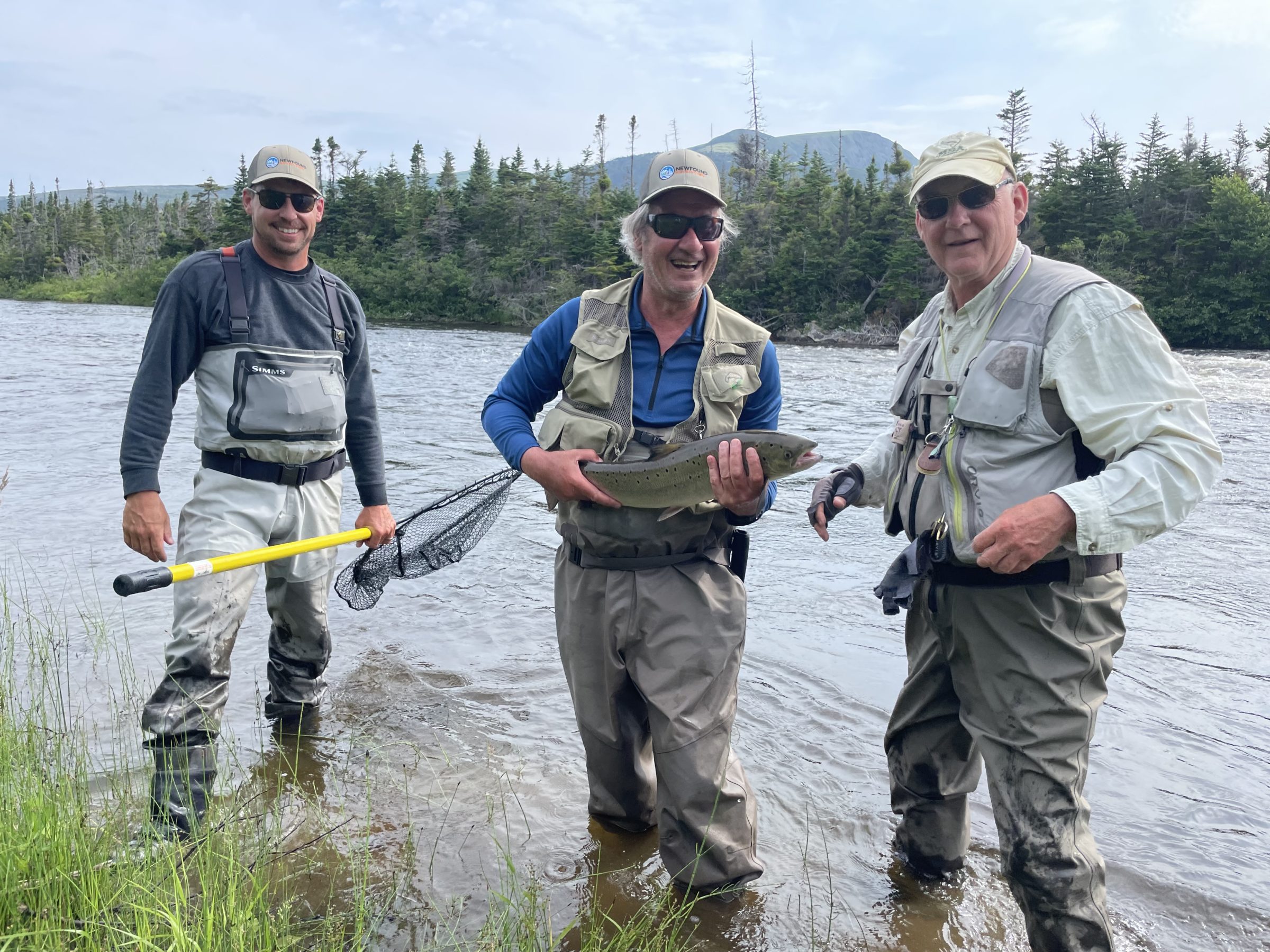
Paul Rogers, the doctor and me with the salmon that created some tense moments when it went back over the falls.
None-the-less we caught salmon, and I got another chance in my salmon fishing career to re-learn a lesson that I have a hard time remembering. I made a pass through the top of a fairly deep pool that we were quite confident was holding some salmon, some of which might be a bit on the stale side. I was fishing a #6 Undertaker. Near the end of my pattern Paul Rogers, looking down from a good 10 feet higher up on a ledge said, “you rolled one.” “It was a deep roll,” said Paul, and from my deep-wading vantage point I hadn’t seen a thing. Quite a few casts and different flies later the fish had failed to reappear, and I yielded my turn to an English ER doctor from the Isle of Wight who was my fishing partner for the day. Tom worked his line out to where the fish had rolled, and as soon as he reached the fish he was on. The difference, impossible to say for certain, but I believe it was the fact that at the end of his Spey line was a 10′ intermediate poly leader. I enjoy straight mono because it is a pleasure to cast and because you can see the wake of any fish that comes near the fly. There are times, though, especially on fish that are no longer as fresh as a daisy, when it clearly makes the difference. I’m pledging to always keep one coiled up in my pocket ready for any such situation. Tom’s fish then became one of only two that Paul had ever seen go back over the small waterfall in back of us. Miraculously it somehow stayed on the line, and it made for an exciting morning.
The Canadian Department of Fisheries and Oceans released its stock status update for salmon through December 2022.The statistics pose some interesting questions. First, the Restigouche total 2022 returns were 6,000 salmon 4,000 grilse representing about a 60% decline from 2010 leaving the river solidly in DFO’s critical zone. The Miramichi had a total of 10,000 salmon and 8,000 grilse which breaks down to 7,400 salmon and 6,000 grilse in in the SW and 2,400/1,900 in the NW. Spawning salmon numbers were down approximately 50% since 2010 in the SW Miramichi and 56% in the NW. Amazingly the Restigouche decline – according to DFO estimates – is even worse than the Miramichi. I hear the Matapedia – a Quebec River which shares a mouth with the Restigouche – is also having a tough year this year. I don’t know why these rivers are seeing such a decline, but I have heard that indigenous netting there is largely uncontrolled and extensive.
On the other hand, the population of Nova Scotia’s Margaree River is more or less level – up a little if anything – over the last 30 years, and the whole river is characterized as being in the healthy zone in terms of its salmon population. Why? The Miramichi was in that state 10 years ago too. The difference is almost undoubtedly the outrageously over-protected striped bass population of the Miramichi that is knocking off our smolts before they get a chance to go to sea.
What about 2023? The Millerton and Casillis trap numbers this year are just plain terrible. It may be that fish counts are reduced somewhat by poor efficiency from high water and warm water closures – I just found out that DFO does not operate the traps during the warm water closures. That could make quite a difference one year to the next, but still the declines – the counts are down some 70% compared to 2022 – are very concerning.
The Dungarvon and NW Miramichi Barriers which are operated for New Brunswick Department of Natural Resources by the MSA are another measure to look at. The barriers, unlike the traps, catch and count every fish that enters them. The Dungarvon Barrier – a tributary of the SW Miramichi – has collected 104 salmon and grilse so far this season. This compares to 141 in 2022. That is a decline of 29%. The grilse number alone is 49 compared to 55, or about a 10% decline. That grilse number may be very important because it is the most likely direct link between outgoing smolts and returning adults. On the NW the total returns are 40 – grilse and salmon – for 2023 compared to 196 for 2022. That is an alarming decline of 80%! Perhaps even worse than that dismal number is the grilse decline from 101 to 5 for a decline of 95%. While it can’t be said definitively it certainly suggests that the smolt tagging study which showed that in 2022 only 3% of the tagged smolts in the NW Miramichi made it by the bass and out to the ocean is correct.
DFO also released their 2022 striped bass numbers. Many of us suspected that the striper numbers are at unprecedented high levels. In 2022 DFO’s official count is up to just a hair under 500,000 adult fish. That estimate is up from the more or less 300,000 of the previous few years. In 2005 through 2009 the striped bass were thought to number about 50,000, similar to the salmon numbers. Grilse numbers then were 3 to 4 times as great as they are now. Even 100,000 stripers would probably allow for a reasonable coexistence of the two species, but at 500,000 the stripers will eventually turn the Miramichi into a purely striper nursery. We can’t stand by and just let that happen. Something has to change and quickly. What is needed right now is a decision to bring the striper population down to something like 100,000 adult spawners, and the way to do that quickly is allow the gasperaux fishermen to trap and sell the bass, and to allow the MSA to gear up to stock large quantities of fry originating from brood stock raised in the hatchery from wild smolts.
Brad Burns


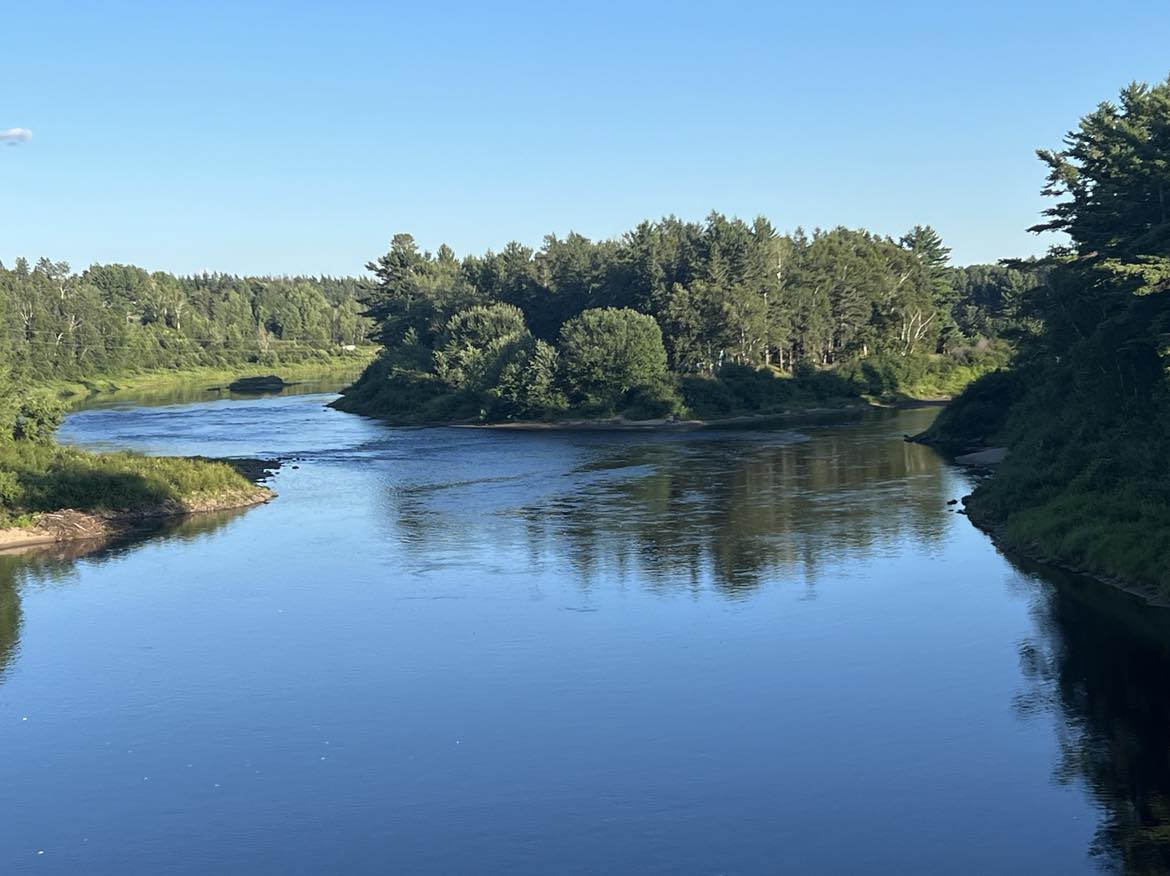
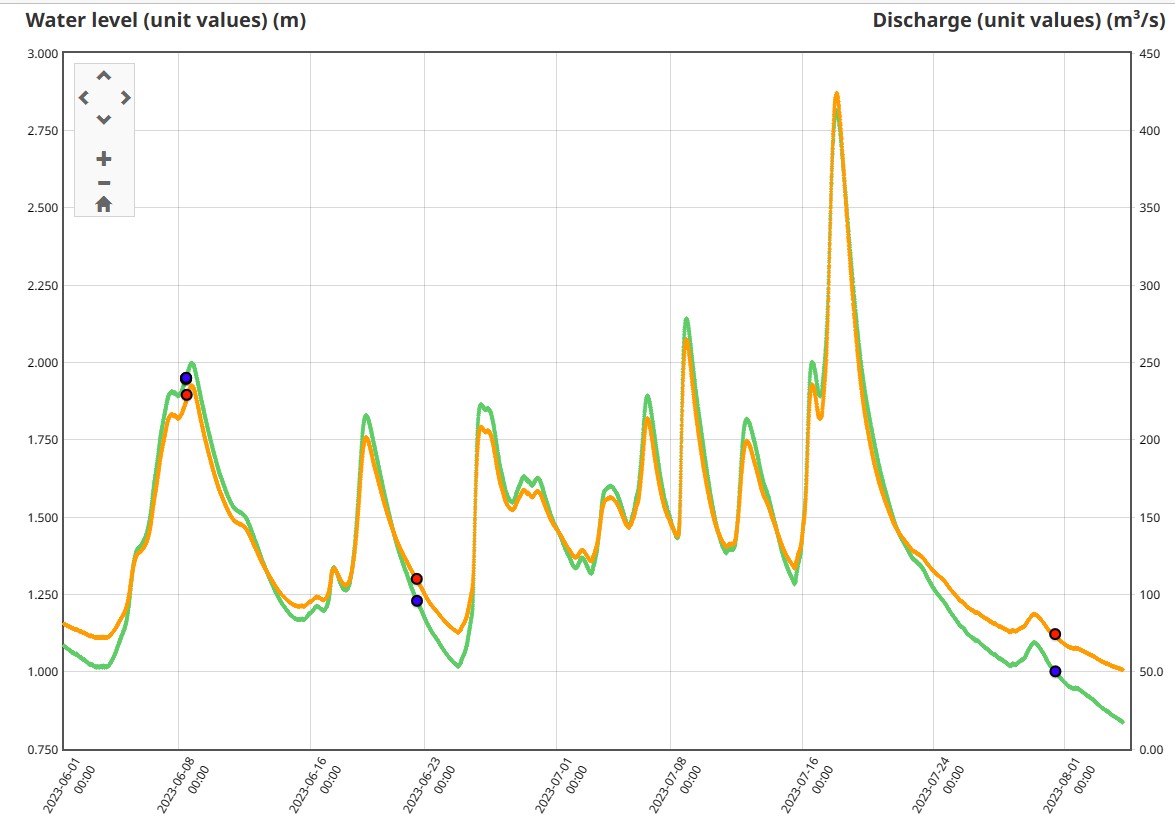
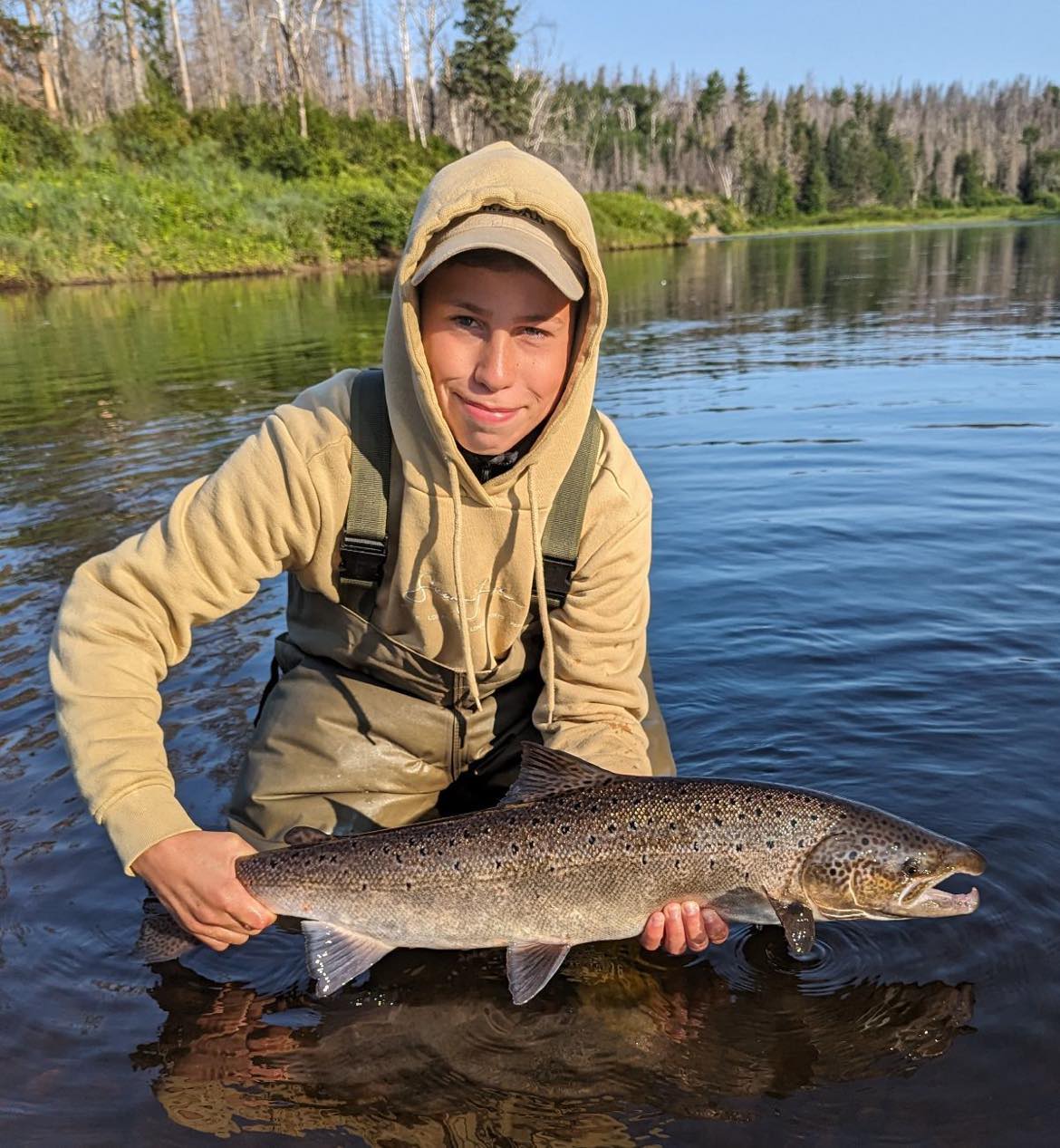
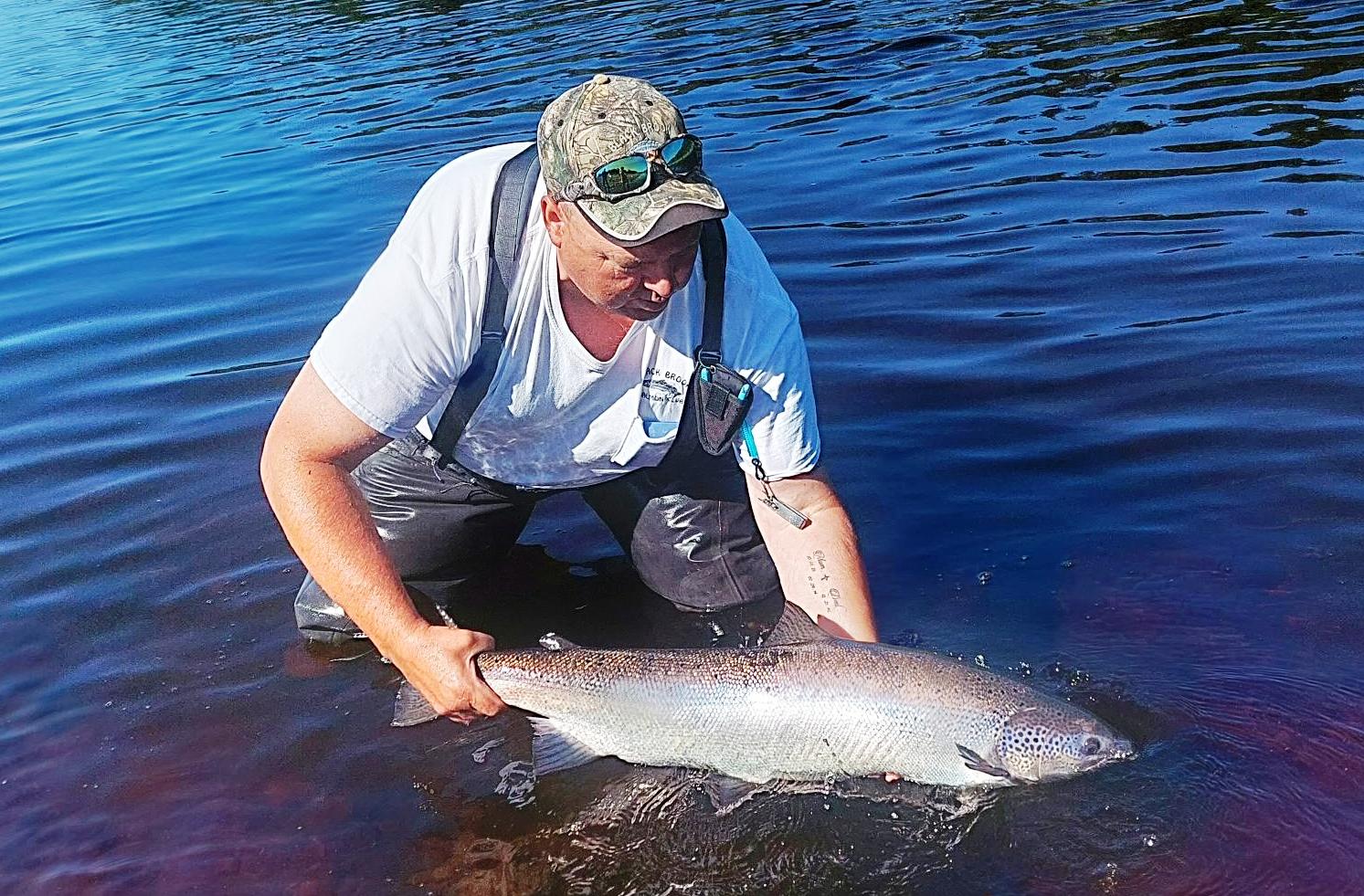
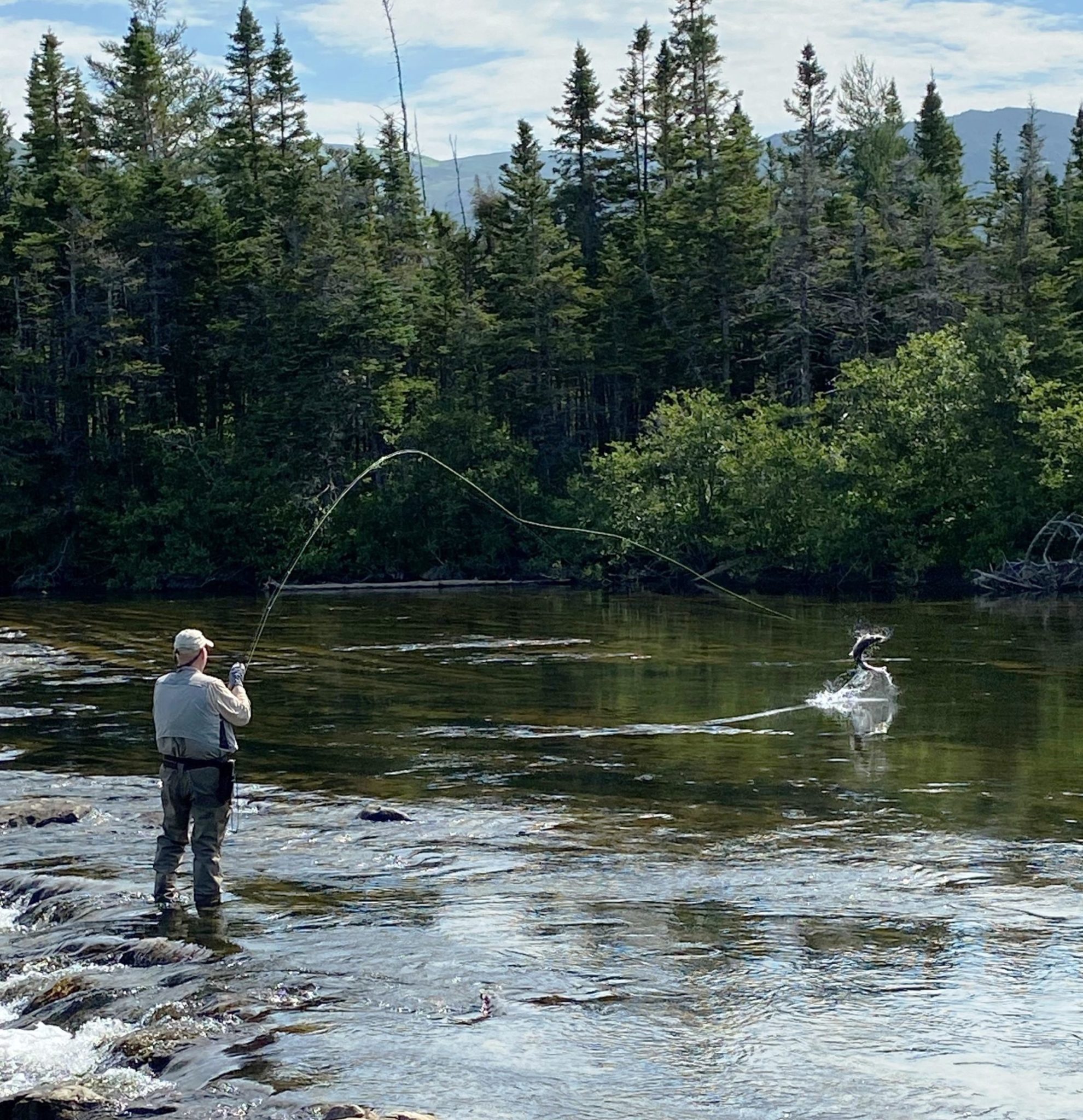
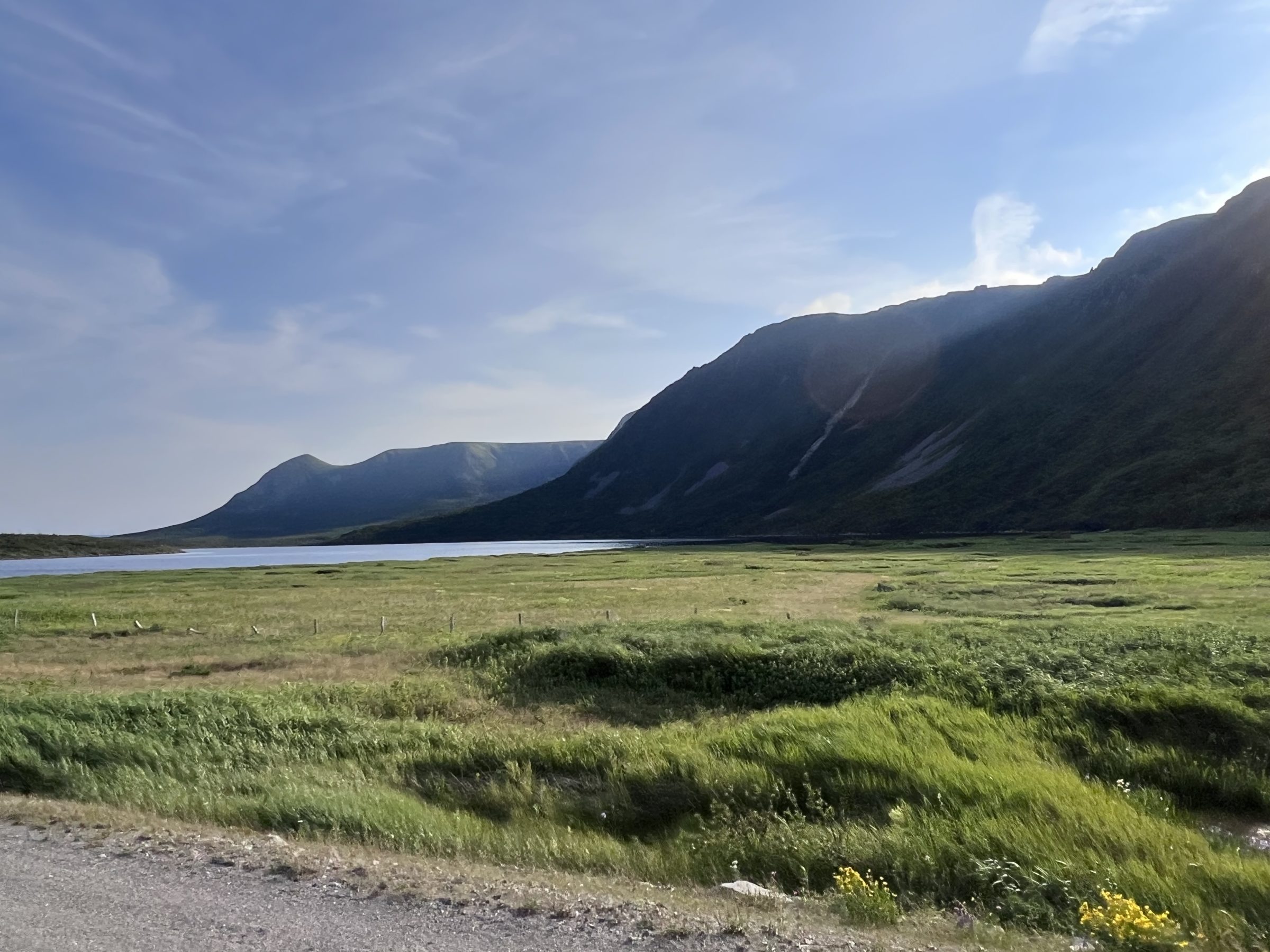
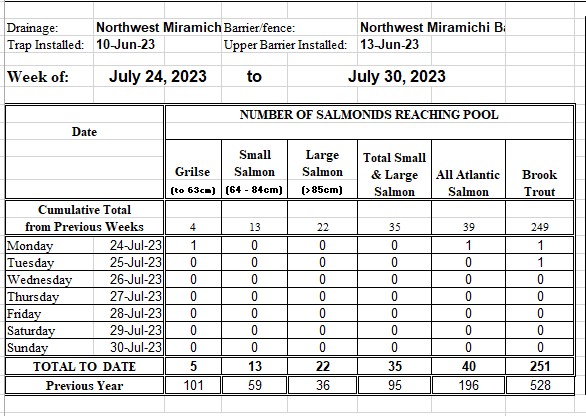
I believe that your assessment is right on.DFO doesn’t want to take action on the stripers for some unknown reason. I think it’s time for a study on the competence of the DFO management….they have been neglecting the salmon for far too long now. Could it possibly be that they think the striper fishery would be more profitable for the province?Tradition has to be considered in these decision making cases.Maybe it’s time for some new blood in DFO management……it is evident to many who fish the salmon that they have been mismanaged for a long while now……I have been fishing the Miramachi for well over thirty years now and am getting discouraged with lack of action by the government.I have watched the same disinterest taking its toll on the Margaree also over the years…..It is so sad to see this happening to rivers we all care about……rant over….
Hello Brad,
Once again I appreciate the effort you put into your salmon blog, I really enjoyed the photos from Newfoundland. It is discouraging to read of the low fish returns .
I hope your fall fishing is more productive. I miss my trips to the Miramichi.
From the Olympic Peninsula, Kal Kotkas
Thanks Kal. People who bought a trip donated to the MSA fished out of Campbell’s the last couple of days and caught several sea liced salmon! That is excellent news. Maybe just cooling off a bit is going to help. Brad
Same results as the cod fisheries in the East, over 100,000 people in NFLD, and not even talking about the people in NS, PEI, NB that the DFO watched decline and then shut down. Rename the Moncton airport after the minister agreed, imagine not one person in DFO was fired, no minster fired, and now the feds give over 30 billion to make batteries in ONT, nobody in Canada needs, or wants. Ontario squeaks and the feds dump billions, a fishery dies and disrupts people lives and they fire nobody, well it is time DFO IS ELIMINATED and we can start in the cabinet and put some tax money to work.
Ken – the Province of Quebec manages its own anadromous fisheries. At the least that should be a model for the other Provinces. Brad
Hi Brad,
Great report as usual. I’ve been chasing these silver beauties of the Miramichi for more than 30 years now. I must say this year has taken a lot of my salmon fishing MOJO away. We all know there are several factors as to why the salmon numbers continue to decline, and yes, the over populaion of striped bass is a major factor. What bothers me most is that I’ve spoken to people in some of the organizations that were created to maintain and enhance our salmon population and they are so frustrated with the lack of action as well. If our scientists and others in the MSA and ASF see potential answers and are thwarted how can we feel hopeful? If you were to advise the average salmon fisherman as to how they could help, what would your advice be? Thanks. Bob
Thanks Bob. For the Miramichi the MSA is the best hope. There is a lot going on there by people with big stakes in the Miramichi. Join the MSA, go the dinners and other fundraising events, and write in to the President with your willingness to volunteer. There will be opportunities.
Yes agree with you Brad,the Stripers are ruining our salmon returns.I heard the smolt returning to sea on the NW Miramichi is only 5% and something like 25% on the main SW.DFO care more about Stripers and Right Whales than they do about salmon.We in NB need to take back our salmon rivers from DFO!
Hello Steve. I couldn’t possibly agree more on DFO/Province. I don’t think those smolt escapement stats are quite as bad as they seem. They may be accurate, but it is for the smolts tagged in the study. Those tagged smolts are probably considerably more prone to predation than untagged ones. Still it is clear that the bass are getting far too many of them. The bass population is probably at least triple what the upper limit should be.
Thanks Brad, great report.
Thank you, Thomas. It’s a labor of love…
Hi Brad,
Just a different angle from Scotland where my home River Nith in Dumfriesshire produced in 2 weeks to 2 rods our entire annual catch repeated over 2022 and 2021 (2020, as all over the Atlantic salmon World was much better). Cool water running at 1.25ft over the flood mark did the trick also. Was one of those rods me? Very possibly!. All beautiful chunky silver fish or chrome as you guys say over here often.
There are fish about there must be to give me my best July week for 20 years and even some nice sea trout to 4lb.
Hope to find the fish when I come out to you in NB in October.
Thank you for the report.
TLs
Henry
Howdy Brad,
Thanks, another very informative and interesting report. I respect that.
It also depresses me about the numbers of bass and the lack of attention paid the more valuable and beautiful Atlantic Salmon and trouts in the Miramichi river system.
Small streams closed here, snd fishing slot times imposed on larger ones. Very low water, some days up to 36°C.
I haven’t wet a fly this month, but sources tell me the trout(Westslope Cuththroat) (Elk River, South East B.C.)fishing has been good. And the local guides were busy though the fires are now keeping tourists away.
This last couple weeks local fires have created smoke so thick I can cut through it with my hand.
Quite a few folks wearing N95 masks for outside activities.
Keep up yhe good fight.
Happy Day
Dave O’Haire
Always great to hear from you Dave. Wearing masks to fish outdoors does sound strange for sure. We have had a cooler than average August, I’m happy to report. Everyone is now awaiting the start of the fall fishing.